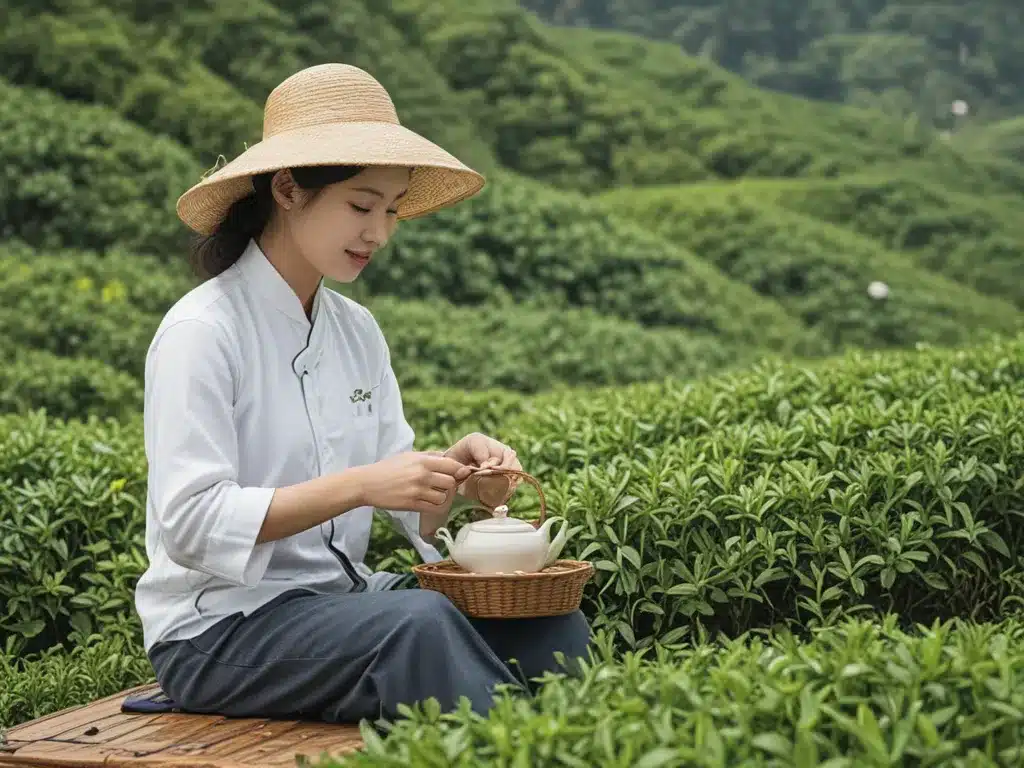
Fujian Province
As a Chinese tea lover, one of the top destinations I would highly recommend visiting is Fujian province. Fujian is famous for producing some of China’s finest teas. Three main varieties that Fujian is renowned for cultivating are oolong tea, pu’er tea, and white tea.
Fujian has a long history of tea production dating back over a thousand years. Some key places in Fujian that are interesting for a tea tourism trip include:
Anxi County
As the original home of oolong tea, Anxi County has over 1,300 years of tea culture and production. I had the chance to visit many family-run tea plantations in Anxi‘s scenic countryside. I learned about the different processing techniques used to create the delicious Anxi Tieguanyin oolong tea.
Pu’er City
Located in southwest Fujian, Pu’er City is famous for producing premium aged pu’er tea. I toured several local tea factories and saw how they process and age raw pu’er tea bricks. It was fascinating witnessing the transformation of fresh tea leaves into a thick, dark brew over decades of carefully controlled fermentation and storage.
Longyan City
As a center for quality white tea, Longyan City has many tea plantations and processing workshops. I spoke to farmers about the delicate hand picking and drying process required to produce the light and aromatic Bai Hao Yin Zhen white tea. It was amazing to see the differences in techniques compared to darker oolong and pu’er teas.
Taiwan
Another excellent destination with a strong tea culture deeply tied to Fujian is the island of Taiwan. Having separated from mainland China centuries ago, Taiwanese teas still maintain close connections to Fujian varieties and processing styles.
Taipei & Nantou County
As the nation’s capital, Taipei has several tea museums providing a historical overview of tea in Taiwan. Further south, Nantou County is a top producer of high mountain oolong teas. I spent a relaxing day wandering through the scenic Alishan mountain range, sampling fresh brews at roadside stalls and tea picking on organic farms.
Pinglin Town
Located a short train ride from Taipei, Pinglin Town is renowned for its centuries-old tea tradition. I observed tea masters carefully sorting, roasting and shaping individual leaves into the twisted Tieguanyin oolong style. It was amazing to learn how subtle differences in each step create distinctive aromas and tastes.
Yunnan Province
While less historically linked to Fujian tea, Yunnan province has emerged as an influential producer with its own native varieties. The tropical climate and diverse ethnic groups contribute a different flavor profile.
Pu’er City (Different from Fujian Pu’er City)
As the spiritual home of pu’er tea, Yunnan’s Pu’er City has a unique tea culture centered around raw, fermented pu’er. I took a tea appreciation class learning how to properly brew and evaluate different pu’er varietals. It was an enlightening experience developing my palate to detect the nuanced earthy and woody notes.
Xishuangbanna Prefecture
Down in southern Yunnan bordering Laos and Myanmar, the tropical Xishuangbanna region excels atgrowing global tea varieties like black, oolong, and green teas. I toured local Dai minority villages to sample the differences in locally grown Pu’er, Gaoshan, and Maocha teas.
Hong Kong
While not a major producer itself, Hong Kong has played an important role in the global tea trade for centuries. It remains a hub for tea auctions, appreciation, and culture.
Hong Kong Tea Museum
The award-winning Hong Kong Tea Museum provides a comprehensive overview of tea history from Fujian and Yunnan origins through modern global trade networks. I was fascinated learning about early tea horse roads and how these crucial trade routes shaped regional economies and cultures.
Tea Master Demonstrations
Several cultural centers in Hong Kong regularly host tea master demonstrations on traditional Chinese tea ceremonies and preparation techniques. I enjoyed watching experts carefully handle top-grade pu’er, oolong and white teasoriginiating from the regions discussed above. It was a wonderful experience to see such refined skills and tea appreciation up close.
In summary, whether your interests lie in history, horticulture, or simply great tastes – any of the tea tourism destinations discussed provide incredible opportunities to deepen your understanding and appreciation of Chinese tea culture. Both major producing regions like Fujian, Taiwan and Yunnan as well as trading hubs like Hong Kong offer unique insights and experiences for the serious tea lover. Proper planning ensures an educational and memorable visit surrounded by this fascinating beverage so integral to Chinese heritage and lifestyle. Please let me know if you need any other tips or recommendations!






